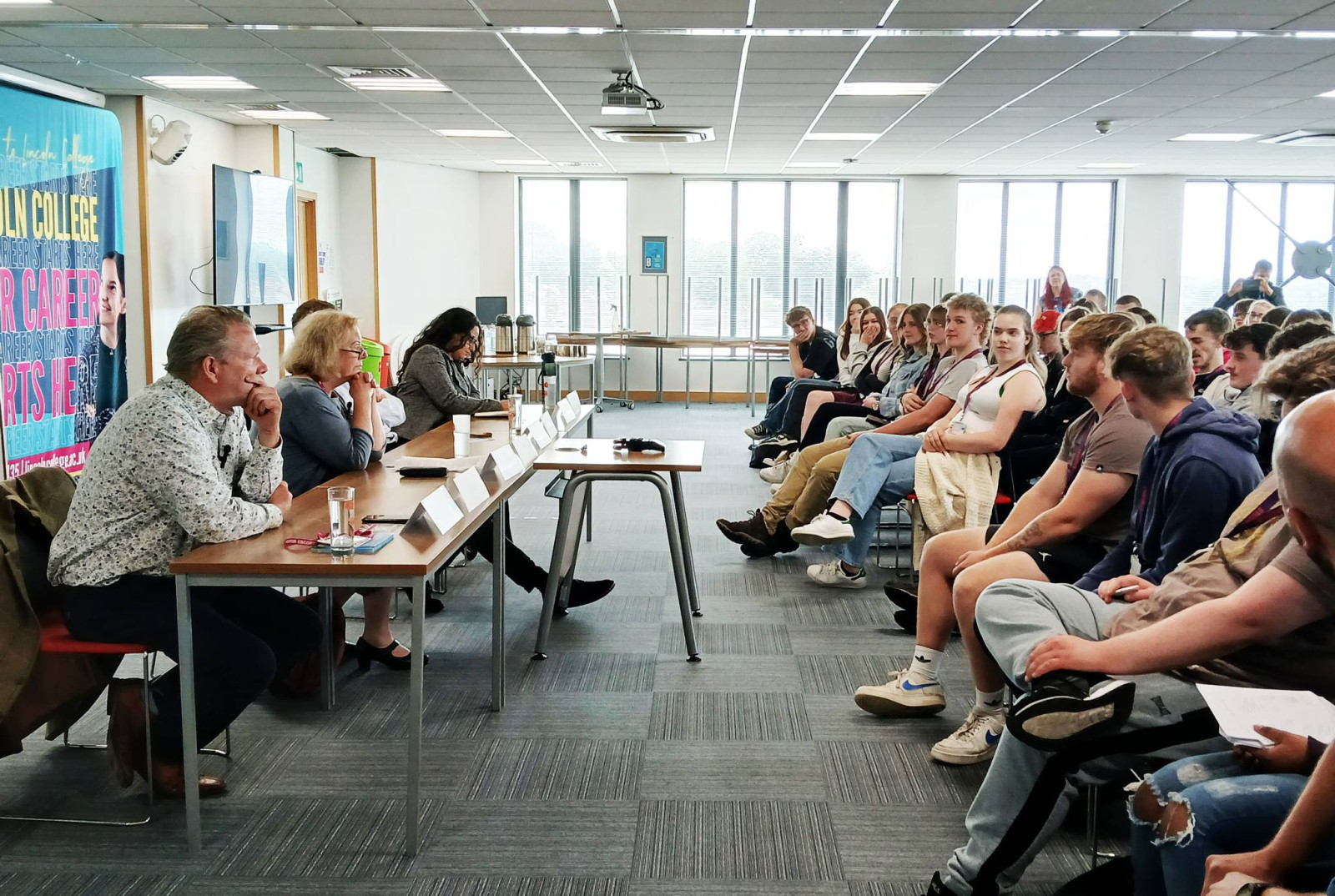This dynamic occupation is found in the manufacturing and process sectors. The general objective of an engineer fitter is to produce complex high value, low volume components or assemblies in full or part, using machines, equipment or systems, to the required specification, for example, turbines, cranes, gearboxes, production lines, rigs and platforms. You may typically have mechanical, electrical, electronic, control systems, pipe fitting or instrumentation bias or operate across multiple disciplines depending on the type of assembly.
To produce or refurbish the components you will interpret drawings/specifications and plan your work, such as ensuring having the right tools, equipment and resources to complete the task to the required specification. You’ll be required to check your work against quality standards and adjust as required based on your knowledge. On completion of the task you’ll hand over the product and prepare the work area for the next task by checking equipment meets the standards required to operate. You may be based in a workshop or client’s premises - this may include hazardous environments.
In your daily work, as an engineering fitter, you’ll typically interact with line managers/supervisors; depending on the size of the employer and the nature of the work you may work as part of a team of fitters or independently. You may interact with personnel in other functions for example installation and maintenance engineers, health & safety and quality assurance personnel, as well as internal or external customers.
In this occupation, you will be responsible for the completion of your work to the required specifications and deadlines, in line with quality, health & safety and environmental regulations and requirements, with minimum supervision.
Off the Job Training
A key requirement of an Apprenticeship is Off-the-job training. This must make up an average of Six hours per week of your working hours, over the total duration of your planned training period. Off-the-job training must be directly relevant to the apprenticeship standard and must take place within your normal working hours. The new learning must be documented and reflected on through the Learner Journal on your e-portfolio.
Level Two English and Maths and either an engineering related qualification, an interest, or aptitude for engineering. You will need to be in a relevant role and show a willingness to undertake the knowledge, skills and behaviours required.
You may be required to attend an interview and undertake relevant skills assessments.
Once you have been accepted onto the programme all apprentices will be required to attend a Lincoln College Induction.
On program learning will be supported by an engineering work-based assessor and our experienced college lecturing team. You will be assessed in the workplace across a broad range of duties closely mapped to the KSBs above. In addition to this, you must also complete your mandatory qualifications which are:
An employer approved Level Three Development Technical Knowledge qualification
Apprentices without Level Two English and Maths will need to achieve this level before taking end point assessment
End Point Assessment
You must complete:
Assessment method One – project: report including evidence, and questioning
Assessment method Two – multiple choice test
Assessment method Three – professional discussion supported by a portfolio of evidence
Assessment method One – project: report including evidence, and questioning The purpose of the project is to assess your knowledge, skills and behaviours in a way that closely relates to your day-to-day responsibilities. You must conduct a project based on an engineering fitter activity undertaken during your EPA period, relevant to your workplace and under the supervision of a technical expert from your employer. Following the activity, you must compile a report. The report must contain evidence from the completed activity as annexes. The Independent Assessor will question you about the content of the report and evidence.
Assessment method 2 - multiple choice test The purpose of the multiple-choice test is to assess your depth of understanding in the knowledge elements that may not naturally occur during the observation. The multiple-choice test will usually be computer based and taken online; a paper-based version will be available if required. It will consist of 30 multiple choice questions. The questions must relate to the underpinning knowledge and must be varied.
Assessment Method 3 – Professional Discussion The professional discussion aims to determine the extent to which you understand the requirements of your role as defined by the standard and to explore them through discussion. The professional discussion (supported by a portfolio of evidence) will be a face-to-face session involving you and the end-point assessor. The portfolio will be used as a source of evidence by which you can exemplify your responses to questions asked by the assessor. Modern communication software applications may be used but it is the responsibility of the EPAO to ensure the application and the infrastructures are fit for purpose so as not to disadvantage you whilst ensuring quality and standardisation are not compromised.
Qualifications
Level Three Development Technical Knowledge qualification
Apprentices without Level Two English and Maths will need to achieve this level prior to taking the end point assessment.
Progression
Once you have completed this apprenticeship, you will be classed as a “Time Served Engineer” and as such opportunities within engineering are wide and varied. You may take on a promotion at your current employer or look to develop your career in other areas of the UK or overseas. You may also choose to continue with your education and study engineering on an HNC/HND program or a degree.
Personal Protective Equipment (PPE) for mechanical pathways
Safety footwear (Protective toe cap)
Navy blue overall (boiler suit) – Flame retardant for Welding Apprentices
Clear eye protection (CE or BS marked)
Course Textbook
L3: Mechanical Engineering Fourth Edition (Darbyshire ISBN-10: 1032188537)
General Equipment
Pen
Pencil
Scientific Calculator
Notebook or paper with lever arch file.
Access to a tablet/computer to access your e-portfolio.
Lincoln College have facilities at Lincoln, Gainsborough and Newark to deliver training to apprentices. High quality of teaching by qualified and experienced industry experts; an excellent balance of theory and practical sessions. Training can be delivered on a 1:1 basis in the workplace, day release or bespoke training programmes to meet your requirements. Our employers are actively involved in the training with assessments carried out in the workplace. Through partnership collaboration your apprentice’s progression and development will be supported and reviewed regularly through face to face and remote contact through the use of an e-portfolio.
Knowledge
K1: Materials used in components/assemblies, for example; mild steel, aluminium, composites, copper etc. Their use and application considerations, for example, machinability, hardness, conductivity, cost, availability and compatibility.
K2: Principles of design and operation, for example; design for cost, minimising waste, productivity (speed), health and safety, reverse engineering Back to Duty.
K3: Manufacturing and assembly processes for example; filing, sawing, scraping, drilling, soldering, bolting, wire cutting, threading etc.
K4: Safe use of tools and equipment (hand and power tools); right tool for the job, requirements for machinery checks, adjustments, operation and shutdown.
K5: Component/assembly specifications, for example; electrical loading, load charts, torque settings, and tolerances. What they are and how to use them.
K6: Techniques for measuring, marking, cutting and drilling materials to the required size and shape, accurately, safely and economically and manufacturing processes.
K7: Engineering mathematical and scientific principles; methods, techniques, graphical expressions, symbols, formulae and calculations.
K8: Engineering data, for example; electrical readings, vibration, speed and calibration. What they are and how to interpret and use.
K9: Component/assembly documentation. For example, bill of materials, standard operating procedures, inspection records, assembly instructions, and electrical/pneumatic/hydraulic circuit diagrams. What they are and how to interpret and use.
K10: Quality standards for components/assembly, for example, drawing, calibration of equipment, and materials specification. How to ensure they have been met and assured. Application of ISO9001 (Quality Management Standard) in the workplace.
K11: Health and safety, including Health & Safety at Work Act, personal protective equipment (PPE), manual handling, Control of Substances Hazardous to Health (COSHH), Provision and Use of Work Equipment Regulations (PUWER), Noise at Work Regulations, Electricity at Work regulations, risk assessments; and how they must be applied in the workplace.
K12: Environmental considerations; safe disposal of waste, minimising waste (reuse and recycle), energy efficiency.
K13: Who they need to communicate with and when, and communication techniques - verbal and written.
K14: Planning techniques – resources, tools, equipment, people; time management.
K15: Component/assembly quality checks for example; checking tolerances, threads, and voltages. Types of faults that occur and problem-solving techniques, for example; cause and effect, five Whys, flow process analysis etc.
K16: Improvement techniques, for example; 5s techniques, problem solving techniques, value stream mapping, kaizen, contributing to effective team working, Total Productive Maintenance.
K17: Fitters’ role in the wider operation. Limits of autonomy; reporting channels. Other functions that fitters could interact with for example health & safety, quality assurance, business improvement/excellence, their purpose and interdependencies. Internal and external customers.
K18: Commercial considerations including contractual arrangements (for example penalty clauses, targets). How the role contributes to commercial operations.
Skills
S1: Reading, interpreting and understanding the component/assembly specification, diagrams, drawings and work instructions.
S2: Planning component/assembly task – materials, tools and equipment.
S3: Preparing work area for component/assembly task; sourcing required resources, tools/equipment.
S4: Carryout relevant planning and preparation activities before commencing work activity and know how to source required resources and interpret detailed drawings, specifications and job instructions.
S5: Checking tools during and after task completion; identifying and reporting defects.
S6: Measuring and testing, checking/inspecting component/assembly for example; use of micrometres, verniers, multimeters, volt metres.
S7: Problem solving; analysing the issue and fixing the issue where appropriate.
S8: Applying improvement techniques; recommending/implementing solutions where appropriate.
S9: Communicating with colleagues and/or customers (internal or external).
S10: Completing component/assembly documentation for example job instructions, drawings, and quality control documentation.
S11: Reporting work outcomes and/or issues.
S12: Restoring the work area on completion of the activity; returning any resources and consumables to the appropriate location and housekeeping
S13: Disposing of waste in accordance with waste streams; recycling/reusing where appropriate Back to Duty
S14: Operating within limits of responsibility.
S15: Operating in line with quality, health & safety and environmental policy and procedures; identifying risks and hazards and identifying control measures where applicable.
Behaviours
B1: Takes personal responsibility and is resilient. For example, a health and safety-first attitude, disciplined and responsible approach to risk, work diligently regardless of how much they are being supervised, accept responsibility for managing their own time and workload and stays motivated and committed when facing challenges.
B2: Works effectively in teams. For example, integrates with the team, supports other people, considers the implications of their own actions on other people and the business whilst working effectively to get the task completed.
B3: Effective communicator and personable. For example, open and honest communicator; communicates clearly using appropriate methods, listens well to others and have a positive, respectful attitude, adjusts approach to take account of equality and diversity considerations.
B4: Focuses on quality and problem solving. For example, following instructions and guidance, demonstrates attention to detail, follows a logical approach to problem solving and seeks opportunities to improve quality, speed and efficiency.
B5: Committed to continuous personal development. For example, reflects on skills, knowledge and behaviours and seeks opportunities to develop, adapts to different situations, environments or technologies and has a positive attitude to feedback and advice.
Employers have designed the Apprenticeship Standards to meet the needs of the sector and industry. Ensuring they include:
Relevant Knowledge, skills and behaviours ensure that the Standard is relevant to the occupation.
Widening participation Apprenticeship standards provide opportunities to employees that may not previously have been available.
Development tools A cost effective way to train your employees to undertake specific roles in your business.
Return on Investment On average, an apprentice who has completed their course will increase business productivity by £214 per week (CEBR, 2015).
As an Apprentice, you will pay no course fees. However, your employer may have to pay towards your training as well as provide you with a wage. All Apprentices are entitled to the national minimum apprentice wage within their first year of training from their employer, although they can, and often do, pay more. In the second and subsequent years of an Apprenticeship programme, if you are aged 19 or over, the national minimum wage for your age would apply [https://www.gov.uk/national-minimum-wage-rates]
If you are an employer and want to find out more information regarding employer contributions and any further costs related to the Apprenticeship programme, please contact our dedicated Apprenticeship team at [email protected].
Apply Now
-
Open Day
Find next open day



